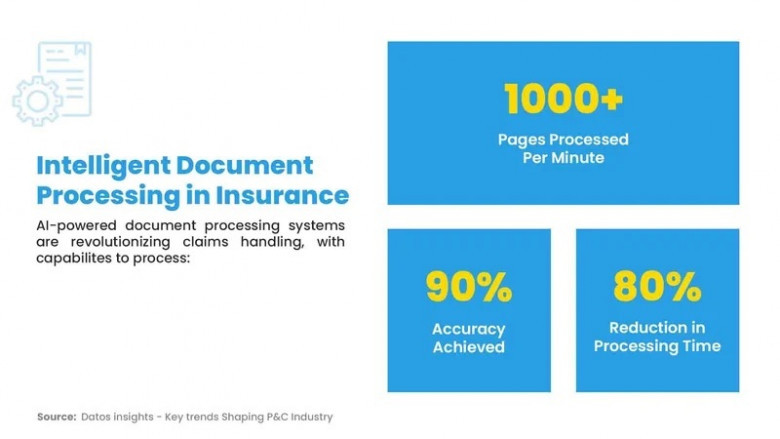views
Think of the old way of handling claims as a traffic jam: every vehicle (or claim) is stuck in a bottleneck of manual tasks and outdated systems. Now, imagine a fast-moving expressway, where vehicles flow smoothly and reach their destinations quickly. That’s the kind of transformation happening as insurers adopt machine learning and large language models (LLMs). These technologies allow claims to be analyzed, prioritized, and processed with unprecedented speed and precision.
From the moment a claim is submitted, generative ai applications can process massive volumes of both structured and unstructured data. It can summarize long reports, highlight key details, and support adjusters in making well-informed decisions. Importantly, this isn't just about replacing people with machines—it’s about enhancing human expertise. AI acts as a powerful assistant, helping teams work more efficiently and accurately.

Real-World Impact of AI-Driven Claims Automation
The benefits are already visible. AI is streamlining the entire claims lifecycle—from the First Notice of Loss (FNOL) through to final settlement. Advanced AI-powered systems can now handle up to 90% of claims without human involvement. This not only cuts operational costs but also drastically reduces the time it takes to resolve a claim. As more insurers adopt these tools, we’re seeing a significant shift toward faster, more customer-friendly claims experiences.
How Neural Networks Power GenAI in Insurance
To appreciate the power of generative AI, it helps to understand the tech behind it. At its core are neural networks—systems modeled after how the human brain works. Think of them as a city’s road system: data flows through intersections (nodes), makes decisions based on learned behaviors, and can even build new "roads" when needed. This flexibility allows generative AI to go beyond just pattern recognition—it can create entirely new patterns and insights by analyzing huge datasets.
When you ask a question, a large language model doesn’t simply search for one answer. It pulls together information from a wide range of sources, analyzes the context, and constructs a thoughtful response based on patterns it has learned.
While traditional AI has helped insurers analyze claims data and predict outcomes—such as estimating claim costs or interpreting sensor data from car accidents—generative AI adds another dimension. It can understand and process unstructured data like handwritten notes, customer emails, and even accident scene photos, converting them into valuable, actionable insights.
Automating the Claims Lifecycle with Generative AI
Claims processing is at the heart of any insurance operation. It involves not just significant financial outflows, but also a large workforce and a direct impact on customer trust. Generative AI offers a compelling way to reduce costs while improving how claims are handled.
The process starts with reviewing extensive information—everything from policy terms to accident reports—to decide whether a claim is valid. Generative AI can instantly analyze this data, leveraging insights from historical claims and past decisions.
One standout example is Lemonade, a U.S.-based insurtech company that has redefined claims automation. Their AI system, known as AI Jim, reviews claims, flags suspicious activity, and can approve payments within seconds. By using generative AI, AI Jim extracts the relevant details from customer input, cross-checks them with policy terms, and determines payouts automatically. For more complex cases, the system hands the claim off to a human adjuster, ensuring sensitive scenarios get the expert attention they deserve. The result? Faster resolutions, greater accuracy, and happier customers.






















Comments
0 comment